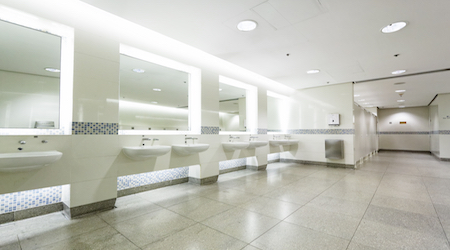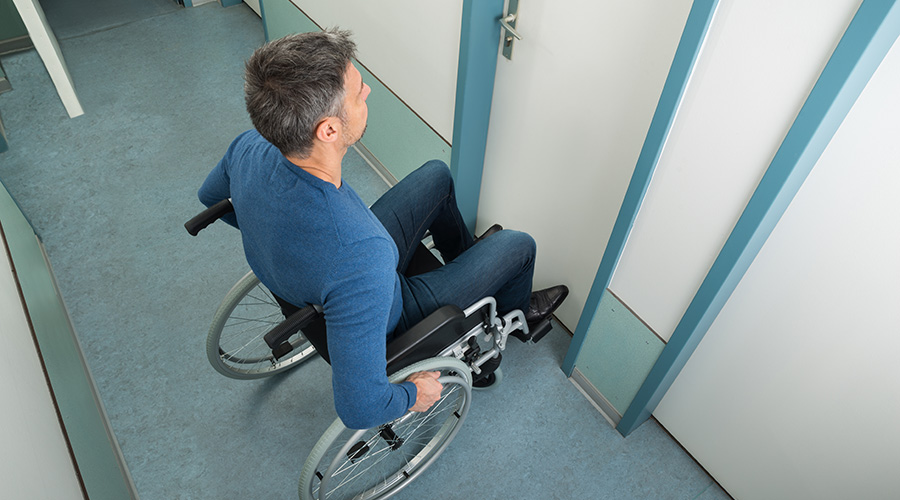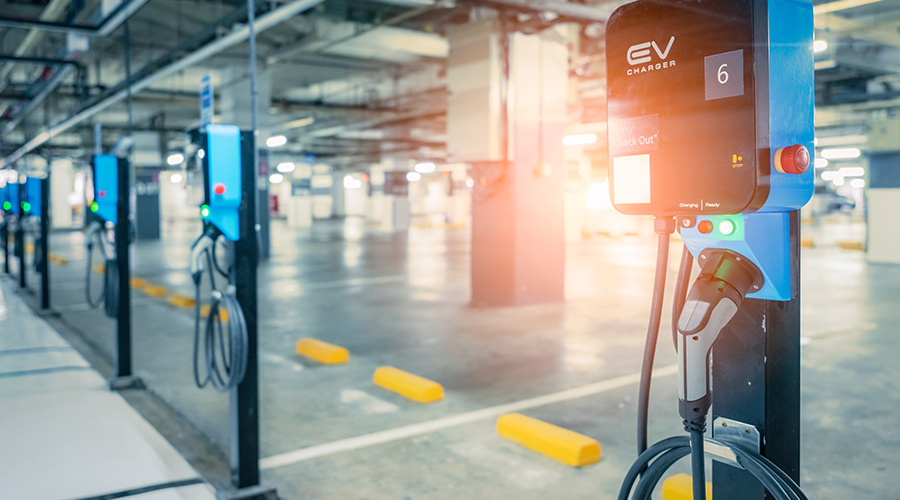Complying With ADA in Restrooms
Part 2 of a 2-part article on ADA requirements in office space, restrooms, and common areas.
Restrooms often include the most expensive changes. Again, if you are renovating the restroom, all elements must be made to comply with the 2010 ADA Standards. If you are making changes as part of path-of-travel barrier removal and your funds are limited, focus on functional things that are not costly, such as replacing non-compliant dispensers. What’s a non-compliant dispenser? Anything that requires tight grasping or twisting of the wrist to operate.
But don’t forget the little things.
• Double-check the mounting heights of all grab bars in accessible toilet rooms and stalls. They must be mounted 33 to 36 inches AFF to the top of the gripping surface. Contractors often mistakenly mount them at 36 inches to the centerline and then ask for construction tolerance. The range is the construction tolerance. Make sure the side wall and rear wall bars are mounted at the same height. These are safety issues. Also make sure they’re secure in their fittings.
• If there are toilet seat cover dispensers, make sure the dispenser does not block access to the grab bar — there must be 12 inches above the grab bar to the bottom of the dispenser.
Maintenance and Accessibility
Once the design and construction processes have been completed, the final important component of ADA compliance is the maintenance of accessible features. What does this mean to facility managers? Do the following:
• Instruct maintenance and housekeeping staff to keep items (particularly trash cans) away from exit doors in restrooms and call buttons at elevators.
• Instruct security staff and receptionists to keep lowered counters clear of items so that wheelchair users can use the desk/area. If a lowered counter is not available, provide a clipboard for the wheelchair user.
• Instruct employees (particularly in retail areas) to maintain at least a 36-inch-wide path of travel.
• Maintain your parking lot during winter weather — don’t plow snow into designated accessible parking spaces or in front of curb ramps.
• Fill cracks and gaps on sidewalks, ramps, and curb ramps.
• Provide handrails on both sides of stairs and ramps.
Finally, it’s important to remember that ADA compliance is not just a federal law; it’s the smart thing to do. The disability market is the largest untapped group of consumers in the United States, comprised of 56 million people, and represents an annual disposable income of $544 billion.
Efforts at barrier removal can provide another benefit to your bottom line. Under Internal Revenue Code, Section 190, businesses can take a business-expense deduction of up to $15,000 per year for the costs of removing barriers in facilities or vehicles. Businesses of all sizes may take advantage of this tax deduction.
So move forward, measure twice and cut once, and make sure it’s ADA-compliant. Your customers, visitors, and employees will thank you for a user-friendly environment.
Joan W. Stein is president of Stein Consulting, LLC, a Pittsburgh-based consulting firm. The firm helps clients to find answers, options, and opportunities on ADA compliance and other areas, and provides litigation support to companies faced with ADA litigation. She has more than 20 years experience with ADA issues. She can be reached at jwstein0731@gmail.com.
Email questions to edward.sullivan@tradepress.com.
Related Topics:













